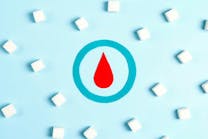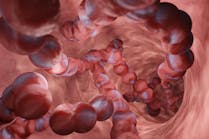Hemoglobin screening is one of the most important tests performed during a donor’s interview process to determine an individual’s eligibility to donate blood products. Donation facilities frequently use the fingerstick method to determine if a prospective donor’s hemoglobin level is within acceptable ranges. The Food and Drug Administration (FDA) and AABB require that an individual’s hemoglobin level be equal to or higher than 12.5g/dl for allogeneic donations and 11g/dl for autologous donations.
Donor centers use different methods to determine a prospective donor’s hemoglobin. Among them are the copper sulfate flotation method, measurement of hematocrit levels, and the use of point-of-care care hemoglobin devices that employ the capillary method. Currently the FDA and AABB do not specify which type of method should be used during the donation interview.1
In the past five years, however, companies have invested in new technologies that make it possible to determine an individual’s hemoglobin without blood obtained by the fingerstick method.
The fingerstick method is minimally invasive and offers only minimal risks to the donor; however, there is still bloodborne exposure between the person performing the test and the donor; the need to use alcohol pads, lancets, and gloves; and the risk of tenderness and bruising in the fingertip. All of this make noninvasive methods an appealing option.2
Blood center administrators and managers may ask, however, whether the sensitivity and accuracy of noninvasive methods are comparable to that of the fingerstick. Does using noninvasive methods put the donor’s health at risk? What kinds of noninvasive methods are available on the market? The goal of this article is to address those questions and help donor center decision makers evaluate noninvasive methods for measuring hemoglobin levels.
Non-invasive hemoglobin screening
The nations of Europe were the pioneers in noninvasive methods for hemoglobin screening, but such methods are now available in many countries. What all of the methods have in common is that they do not require a blood sample to determine an individual’s hemoglobin; instead, hemoglobin is measured by means of a spectrophotometric sensor.
There are two devices that use spectrophotometry as the basis for hemoglobin measurement. The difference between them lies in the type of sensor used. One method relies on occlusion spectroscopy, using an annular, ring-shaped, multi-wavelength probe, with pneumatically operated cuffs. The other method places a multi-wavelength pulse co-oximetry sensor over the individual’s fingertip.
Occlusion spectroscopy
Occlusion spectroscopy technology is composed of a noninvasive optical measurement platform combined with a ring-shaped sensor probe attached to the finger. The finger slides into the probe, which applies pressure and temporarily stops the blood flow, creating an optical signal and yielding a high signal-to-noise ratio—resulting in a measurement. This device is not dependent on an adequate perfusion rate or pulse rate.2
Information about this technology was first published in 2001. The authors studied the effect of RBC aggregation and light transmission when infrared light was applied. They observed that when blood flow stopped after the application of “over-systolic vessel occlusion,” the light transmission increased, making it possible to measure analytes such as hemoglobin, glucose, and cholesterol.3
Pulse co-oximetry technology
Another technology, called pulse co-oximetry, uses a sensor similar to a pulse oximeter device to measure pulse rate, methemoglobin, oxygen, and non-invasive hemoglobin (SpHb) in one device.4
The instrument sensor is placed over the patient’s nail bed and under the finger pulp. Adequate perfusion rate is required to deliver SpHb results, or hemoglobin levels. The device will not display a result for hemoglobin level when a low perfusion index is measured. Dark and metallic nail polishes may interfere with the results.
Evaluating accuracy and sensitivity
Several studies have been published comparing noninvasive hemoglobin methods to standard practice such as point-of-care enzymatic methods and the use of large analyzers in fully equipped laboratories. The main goal of these studies was to establish the accuracy, bias, and precision of the noninvasive point-of-care methods.
In 2010, a study was conducted by a company in Israel and the VA Medical Center in Milwaukee, WI. The study recruited 563 volunteers (303 males, 260 females) in the age range of 18 to 65. It compared occlusion spectroscopy device results to hemoglobin levels obtained from venous samples analyzed on a major manufacturer’s blood analyzer. The study concluded that the noninvasive device had a sensitivity of 82 percent and specificity of 88 percent. The device was able to detect 96 percent of anemic patients when compared to the analyzer.2
A study performed in France compared both noninvasive methods, pulse co-oximetry and occlusion spectroscopy. The study was performed on 300 patients who visited the emergency department of a university hospital. It concluded that both methods were in agreement, and that in both devices the bias was not dependent or directly related to the true value of hemoglobin.5
Another study was performed with 445 and 463 prospective blood donors, also using both spectroscopy and a pulse oximeter sensor. The hemoglobin values of each device were compared to results derived from the capillary method. Results from all three point-of-care devices were also compared to a venous sample analyzed by a full-size laboratory analyzer. The researchers concluded that none of the point-of-care devices, noninvasive or invasive, were as precise as the laboratory equipment; however, of the three point-of-care devices, the capillary method was the most precise, followed by occlusion spectroscopy and pulse co-oximetry.6
A study performed in Brazil on 138 blood samples from patients undergoing major surgery compared hemoglobinmeasured via blood gas analyzer to results derived from a device manufactured for SpHb measurement. The group used a reference range of 7.8 to 15.4 g/dL for hemoglobin determination values. The study concluded that the performance analysis of the two test methods had no statistical differences, with a p value of 0.08 for absolute accuracy and a p value of 0.6 for trending accuracy.7
Another study, also performed in Brazil, enrolled 205 volunteer blood donors. Samples were collected from the subjects by fingerstick and by venous puncture as well. The hemoglobin from the 205 blood donors were also determined using occlusion spectroscopy. The study concluded that the noninvasive method was reliable and easy to use; however, its cost was significantly higher than the invasive method.8
Yet another study analyzed samples of 141 pregnant women undergoing routine mid-trimester hemoglobin assessment, also comparing a noninvasive spectrophotometric sensor to an invasive enzymatic method. The study concluded that the non-invasive device had better predictive limits. This study, however, was conducted in a particular population of pregnant women and may not apply for all populations.9
Finally a 2013 study, involving patients with severe gastrointestinal bleeding, also compared occlusion spectroscopy to the invasive capillary method. This research concluded that occlusion spectroscopy did not yield the same accuracy as the traditional capillary method, especially if the patients were receiving vasopressor agents.10
Interpretations and conclusions
Noninvasive methods are increasingly used by obstetric and pediatric practices to determine hemoglobin levels in their patients, and there is substantial patient satisfaction, especially in those specific populations.4,9 Obstetric patients often need to be monitored in multiple visits, and pediatric patients often do not cooperate well with invasive procedures for blood draw.
Noninvasive methods are also available for continuous patient monitoring in intensive care units and during invasive procedures, such as surgeries, or any procedures that carry a high risk of bleeding.
Those methods have also proved to be inexpensive and do not need controls or daily maintenance, and no trained personnel are required to perform the tests.
If hemoglobin levels are below normal range, a physician’s office can promptly order a traditional CBC and send samples to laboratories for confirmation, before iron supplements or transfusions are recommended.
But what should donor centers do if a prospective donor’s hemoglobin level is found to be below the normal range? Should invasive methods always be used as a back-up method? Should a CBC be ordered? Or should the donor just be deferred?
The answers to these important questions may be different for different donor centers, depending on donor population and other variables. Centers should conduct their own studies before making a decision about adopting a noninvasive method. Additionally, it is important that if a noninvasive device is adopted, the donor’s previous hemoglobin levels should be reviewed, assuming the donor is on file. Invasive methods should probably be employed to measure the hemoglobin levels of first-time donors.
Noninvasive hemoglobin screening methods are an exciting option. Pending further research, however, the traditional blood draw should be considered best practice—for now. Looking forward, it is easy to anticipate a time when clear-cut algorithms are in place to use both noninvasive and invasive methods as appropriate.
References
- Fung M, Grossman, BJ, Hillyer C, Westhoff. AABB Technical Manual: Allogeneic and Autologous Blood Donor Selection. 18th ed, 2014. 122-123.
- Weinstein A, Herzentein O, Gabis E, Korenberg A. Screening of anemia using occlusion spectroscopy. Transfusion. 2010;50:91A-92A.
- Fine I, Fikhte B, Shvartsman LD. Occlusion spectroscopy as a new paradigm for noninvasive blood measurements. Proc. SPIE 4263, Optical Diagnostics and Sensing of Biological Fluids and Glucose and Cholesterol Monitoring, 122 (June 13, 2001); doi:10.1117/12.429330.
- Lindner G, Exadaktylos, AK. How noninvasive hemoglobin measurement with pulse co-oximetry can change your practice: an expert review. Emergency Medicine International. 2013.701529. doi:10.1155/2013/701529.
- Gayat E, Aulagnier J, Matthieu E, Boison M, Fishcler, M. Non-invasive measurement of hemoglobin: assessment of two different point-of-care technologies. PLoS ONE.2012;7(1): e30065.
- Belardinelli A, Benni M, Tazzari PL, Pagliaro P. Noninvasive methods for hemoglobin screening in prospective blood donors. Vox Sang. 2013;105:116-120.
- Neto E, Francisco J, Laish J, Jun O. Agreement of noninvasive hemoglobin monitoring by Pulse CO-Oximetry (SpHb) with invasive laboratory measurements. American Society of Anesthesiologists. 2014;A3093.
- Pinto ML, Barjas-Castro SN, Falconi A, Zulli R, Castro V. The new noninvasive occlusion spectroscopy hemoglobin measurement method: a reliable and easy anemia screening test for blood donors. Transfusion. 2013;53:766-769.
- Hiscock R, Simmons S, Carstensen B, Gurrin L. Comparison of Massimo Pronto-7 and HemoCue Hb 201+ with laboratory hemoglobin estimation: a clinical study. Anaesth Intensive Care. 2014;42(5):608-613.
- Coquin J, Bertarrex A, Dewitte A, et al. Accuracy of determining hemoglobin level using occlusion spectroscopy in patients with severe bleeding. Anesthesiology.2013;118(3):640-648.





